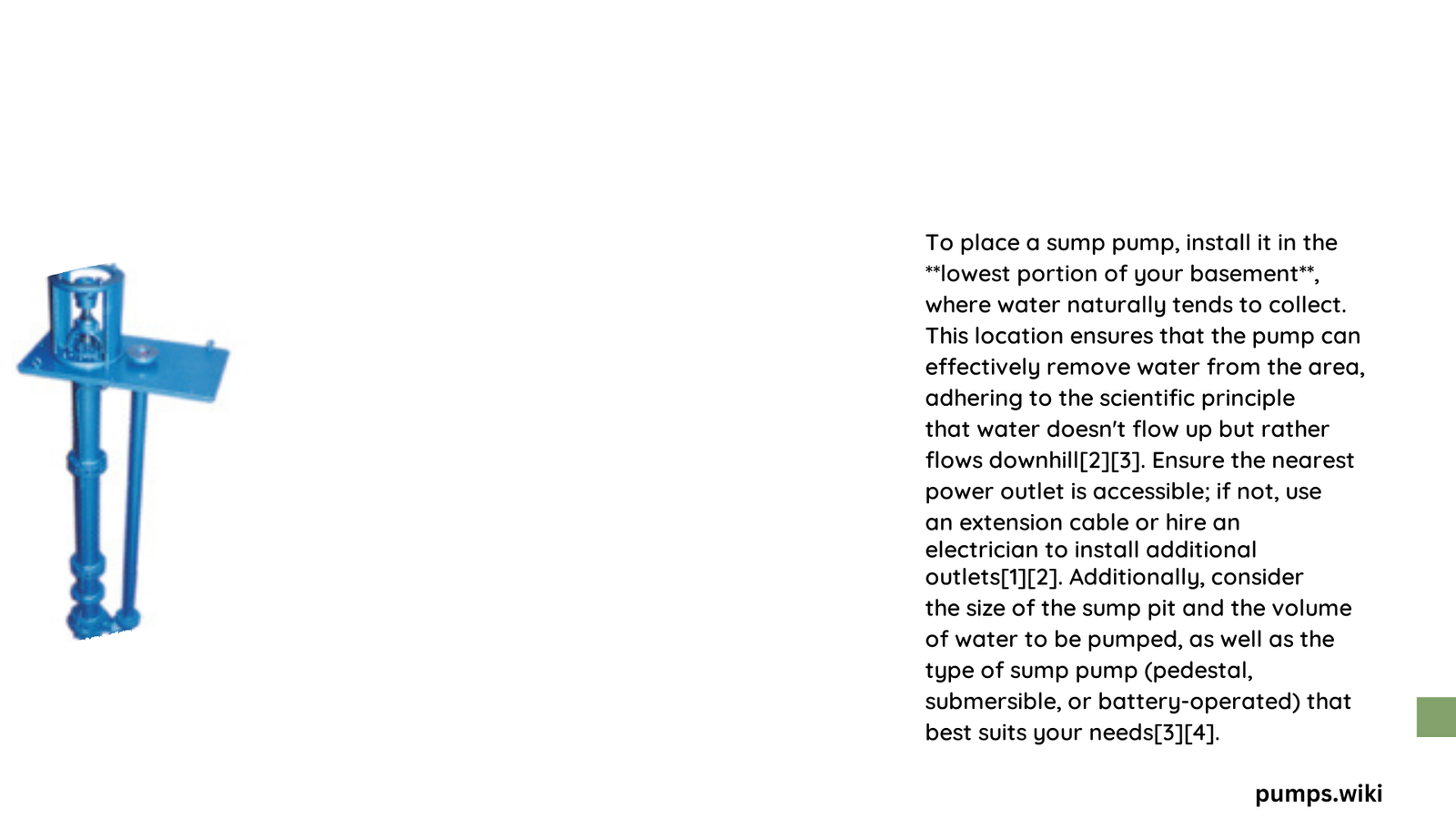Selecting the right location for a sump pump is crucial for effective water management and basement protection. Homeowners must strategically choose a spot that maximizes drainage efficiency, ensures electrical safety, and complies with local building codes. The ideal placement involves identifying the lowest point in the basement, ensuring proximity to a GFCI outlet, and creating sufficient clearance for maintenance and optimal pump performance.
Why Does Sump Pump Location Matter?
Proper sump pump placement is not just about convenience—it’s about protecting your home from potential water damage, preventing basement flooding, and ensuring long-term structural integrity. The wrong location can lead to inefficient water removal, increased risk of pump failure, and costly repairs.
What Are the Critical Factors for Sump Pump Placement?

Identifying the Lowest Basement Point
| Consideration | Details | Importance |
|---|---|---|
| Water Collection | Lowest natural drainage area | High |
| Pit Depth | 2-3 feet recommended | Critical |
| Floor Flush Alignment | Basin top level with floor | Essential |
When determining the optimal sump pump location, consider these key factors:
- Water Drainage Dynamics
- Observe natural water flow patterns
- Look for areas where water consistently accumulates
-
Check for existing moisture or dampness indicators
-
Electrical Safety Considerations
- Locate near a GFCI outlet
- Ensure minimum 3-foot clearance around the pump
- Avoid areas with potential electrical hazards
How Close Should a Sump Pump Be to Walls?
- Maintain at least 12-18 inches from foundation walls
- Allow sufficient space for maintenance access
- Prevent potential structural interference
What Technical Specifications Matter?
Pit Dimension Requirements
- Minimum Diameter: 18-24 inches
- Recommended Depth: 24-36 inches
- Basin Material: Polyethylene or concrete
- Liner Thickness: Minimum 1/4 inch
What Professional Recommendations Exist?
Expert Installation Tips
- Use gravel or stone base for stable foundation
- Ensure proper drainage pipe angle (minimum 1/4 inch per foot)
- Install check valve to prevent backflow
- Consider backup battery system for power outages
How to Prepare the Installation Site?
Site Preparation Checklist
- ✓ Clear debris and obstacles
- ✓ Level the ground surface
- ✓ Check soil drainage capabilities
- ✓ Verify local building code requirements
- ✓ Test ground moisture levels
What Common Mistakes Should You Avoid?
- Placing pump in high-traffic areas
- Ignoring electrical safety protocols
- Selecting inappropriate pump size
- Neglecting regular maintenance
- Improper drainage pipe installation
Cost and Time Considerations
- Average Professional Installation: $500-$1,500
- DIY Installation Time: 4-8 hours
- Materials Needed:
- Sump pump
- Basin
- Gravel
- PVC pipes
- Electrical connections
Final Recommendations
Successful sump pump placement requires careful planning, technical understanding, and attention to detail. Always prioritize water management efficiency, electrical safety, and long-term home protection.
